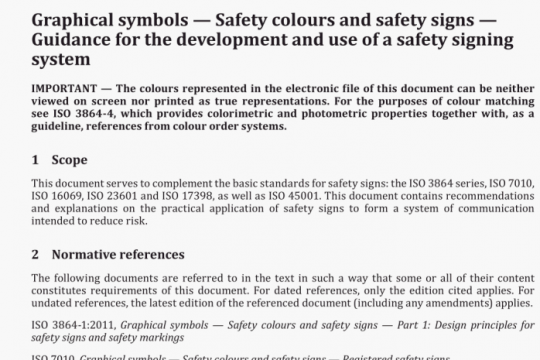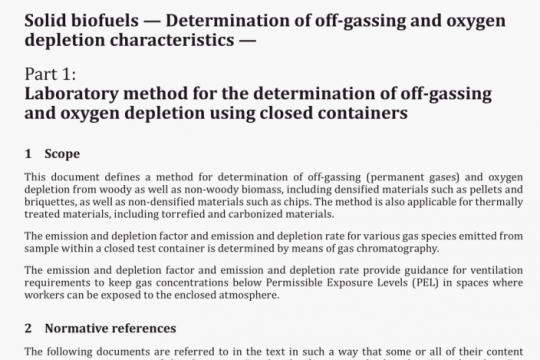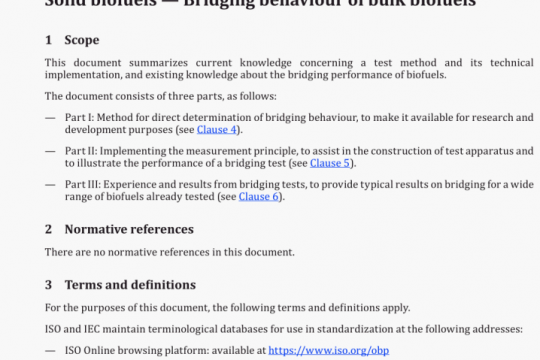ISO 16165 pdf free download
ISO 16165-2020 pdf free download.Ships and marine technology一 Marine environment protection 一Vocabulary relating to oil spill response.
This document contains terms and definitions relating to oil spills and their control. This document provides standardized terminology relating to oil spill response, defined as the broad range of activities related to spill cleanup, including surveillance and assessment, containment, recovery, dispersant use, in situ burning, shoreline cleanup and disposal.
2 Normative references
There are no normative references in this document.
3 Terms and definitions
In developing this document, an attempt was made to use existing definitions wherever possible. For example, comprehensive terminology is available on containment booms, performance of recovery skimmers and on bioremediation, as provided by the publications of the American Society for Testing and Materials (ASTM), Committee F20, on Hazardous Substances and Oil Spill Response. Other areas had less coverage by standards organizations and gaps were filled through a review of a variety of sources. In this document, whenever a published source serves as the primary basis for a definition, this source is indicated by an abbreviated code. The complete citations for these codes are provided in the Bibliography.
ISO and IEC maintain terminological databases for use in standardization at the following addresses:
— ISO Online browsing platform: available at https://www.iso.orgJobp
— IEC Electropedia: available at http://www.electropedia.org/
3.1 Oil/oil slick properties
3.1.1 crude oil
naturally occurring form of petroleum, mainly occurring in a porous underground formation such as sandstone
[SOURCE: ISO 1998-1:1998, 1.05.0051
3.1.2 emulsification
process in which microscopic droplets of water are mixed in the oil, or vice versa
3.1.3 emulsion
mixture of oil and water In which droplets are interspersed in varying concentrations throughout the oil, or vice versa, formed when these fluids are mixed by mechanical or hydraulic action
Note 1 to entry: Emulsions are more precisely referred to as water-in-oil emulsions. Water-in-oil emulsions are sometimes referred to as a mousse.
3.1.4 environmental fate
form and location of a material resulting from transport and transformation
[SOURCE: ASTM E943-08(2014), 2.1]
3.1.5 heavy shoreline oiling
pooled deposits or a layer of surface oil
3.1.6 moderate/light shoreline oiling sheen (3.1.10) or film of surface oil
3.1.7 petroleum oil
material consisting of, or derived from, a mixture of liquid or semi-solid organic compounds, principally hydrocarbons
[SOURCE: ISO 1998-1:1998, 1.05.0001
3.1.8 pour point
lowest temperature at which a sample of petroleum product will continue to flow when it is cooled under specified standard conditions
ISOURCE: ISO 1998-2:1998, 2.10.0801
3.1.9 relative viscosity
measured viscosity of an emulsion (1L3) (in any convenient unit) at a given shear rate divided by the measured viscosity of the oil at the same shear rate
Note ito entry: It Is important to report the shear rate used in the viscosity measurements of the emulsion and the water-free oil.
3.1.10 sheen
very thin oil slick (3.7.3.1) with a silvery or rainbow-coloured appearance and a thickness of less than 0,001 mm
3.1.11 specific gravity
ratio of the mass of a given volume of liquid at 15 °C to the mass of an equal volume of fresh water at the same temperature
[SOURCE: ASTM D4410-16, 3.1]
3.1.12 viscosity
measure of the resistance to flow or deformation of a liquid
[SOURCE: ISO 1998-2:1998, 2.10.0301
3.1.13 windrows
narrow bands of oil, generally aligned with the wind direction (131), typical of an oil slick (3.7.3.1) after several hours of exposure (or days for very large spills).ISO 16165 pdf download.




